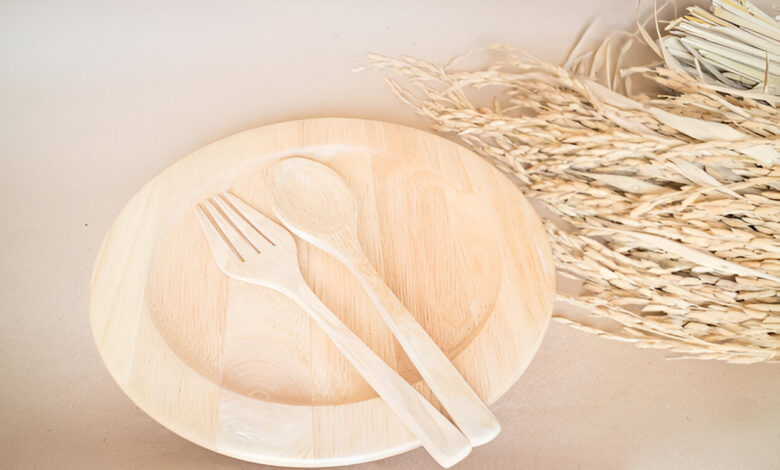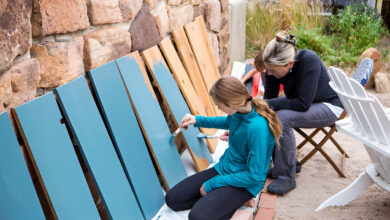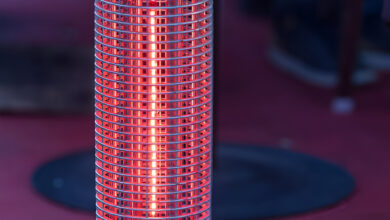🌿 Wheat Straw vs Bamboo Plate: The Ultimate Eco-Friendly Showdown 🌾🎋

In the soft hum of the modern world, where the rustling of plastic still haunts oceans and forests alike, two green-hearted heroes have emerged. One comes from golden fields of grain, the other from the tall, elegant stalks of bamboo. Their mission? To make your meals cleaner—for your body, and for the Earth. 🌍🍽️
The Call for Sustainability
🌊 The Plastic Pandemic
For decades, convenience wore a Wheat Straw vs Bamboo Plate. From single-use plates at weddings to school lunches, plastic ruled ruthlessly. But the tides have changed. Nature rebels, and humans are listening.
🌱 Why the Shift to Natural Tableware?
Disposable doesn’t have to mean destructive. Biodegradable, compostable, and elegant—eco-friendly plates like wheat straw and bamboo whisper promises of a better future with every meal.
What is Wheat Straw? 🌾
🌾 From Fields to Forks
Wheat straw is the dry stalk left after harvesting wheat grains. Traditionally burned as waste, this humble byproduct is now reborn into elegant tableware.
♻️ Composition and Biodegradability
Wheat straw plates are made by compressing the fibers with safe polymers—most of them bio-based. They degrade in months, unlike plastic that clings for centuries.
🔥 Is Wheat Straw Safe for Hot Food?
Yes, it’s not just decorative—it’s practical! Wheat straw plates can handle hot soups and sizzling rice without warping or leaching toxins.

What is a Bamboo Plate? 🎍
🎋 Nature’s Strongest Grass
Bamboo isn’t just fast-growing—it’s a miracle. Stronger than steel in tensile strength, yet gentle on Earth, bamboo has been mankind’s quiet companion for ages.
🧵 The Art of Crafting Bamboo Tableware
Bamboo plates are crafted either from solid bamboo slabs or by pressing bamboo fibers. Some are polished, some natural. All are striking.
🕊️ Bamboo’s Cultural and Environmental Legacy
Used in Asian homes for centuries, bamboo is a symbol of strength and peace. As a plate, it brings that legacy to your dinner table.
Side-by-Side Comparison 🌿 vs 🎋
🛡️ Durability Test
- Wheat Straw: Lightweight, flexible, and resistant to breaking when dropped.
- Bamboo: Rigid, long-lasting, and strong—but can crack under extreme pressure.
🔥 Heat Resistance & Usability
- Wheat straw wins for microwave-friendliness.
- Bamboo may warp or burn—it’s best kept to room temperature meals.
🌎 Compostability & Environmental Impact
Both biodegrade beautifully. Wheat straw decomposes faster due to its loose fiber nature. Bamboo, being denser, takes a little longer.
🎨 Design and Aesthetic Appeal
- Wheat Straw: Soft pastel hues and smooth finishes.
- Bamboo: Rustic textures, earthy tones, and a touch of the wild.
Health and Safety Considerations
⚠️ Are There Any Chemicals?
No harsh glues or toxic finishes—both materials are generally safe. Just ensure your brand is certified BPA-free and FDA-approved.
🧪 Wheat Straw vs Bamboo in Food Safety
Wheat straw plates may sometimes contain bioplastics, so always check for certifications. Bamboo, when untreated, is all-natural.
Affordability & Accessibility 💰
Wheat straw plates are usually more budget-friendly and available in bulk. Bamboo plates are a bit pricier—think of them as the luxury option.
Manufacturing & Carbon Footprint
💧 Water Usage
Bamboo uses significantly less water than other crops. Wheat straw uses no additional water—it’s a byproduct.
⚡ Energy and Waste Emissions
Both production lines are eco-conscious, but wheat straw has the edge as it repurposes agricultural waste.
Best Use Cases 🌎
🍽️ Everyday Dining at Home
- Wheat straw: lightweight, stackable, kid-friendly.
- Bamboo: premium feel, great for intimate dinners.
🧺 Picnics, Events & Parties
Wheat straw wins for events—disposable and compostable. Bamboo suits outdoor weddings and elegant picnics.
☕ Cafes and Eco-Restaurants
Eco-conscious eateries prefer bamboo for style and message; wheat straw for practicality and price.
Consumer Voices & Market Trends
📈 What Are Buyers Saying?
“I switched to wheat straw plates for my toddler, and never looked back.”
“Bamboo plates bring warmth to my dinners. Guests love the vibe.”
🌐 Trending in 2025 and Beyond
Sustainability isn’t a trend—it’s a revolution. Expect bamboo and wheat straw plates to dominate shelves, replacing plastic in schools, events, and even corporate offices.
Where to Buy?
Check out eco-stores, Amazon, or specialty manufacturers like:
- Ecozoi
- Leafico
- Bamboozle
- Greendishware
Make sure to look for BPA-free, Compostable, and FDA-Certified tags.
💡 Final Verdict: Which Plate Wins the Eco Crown?
It’s not a battle. It’s a harmony.
If you’re looking for affordable, microwave-safe, and bulk-friendly, wheat straw is your champion.
If you’re after aesthetic appeal, durability, and class, bamboo steals the show.
Both are kind to Earth. And that’s what really matters. 🌏❤️
🌈 Conclusion: A Greener Tomorrow Begins at Your Table
Each time you place food on a plate, you place hope in the hands of the Earth. Choosing wheat straw or bamboo isn’t just a dining decision—it’s a love letter to nature. It’s saying, “I care.”
Let your meals nourish not just your body, but also the planet. One plate, one choice, one world. 🌱🌍
❓ FAQs
1. Is wheat straw dishwasher safe?
Yes! Most wheat straw plates are dishwasher safe on the top rack.
2. Do bamboo plates crack or fade?
Over time, yes—especially with exposure to extreme temperatures or dishwashers.
3. Are both materials suitable for children?
Absolutely. Wheat straw is lightweight and unbreakable. Bamboo adds a sturdy, natural touch.
4. Can I microwave wheat straw and bamboo plates?
Only wheat straw is microwave-safe. Bamboo is not recommended for microwave use.
5. Which is better for bulk event use?
Wheat straw is lighter on the wallet and easier for disposal in large quantities.



